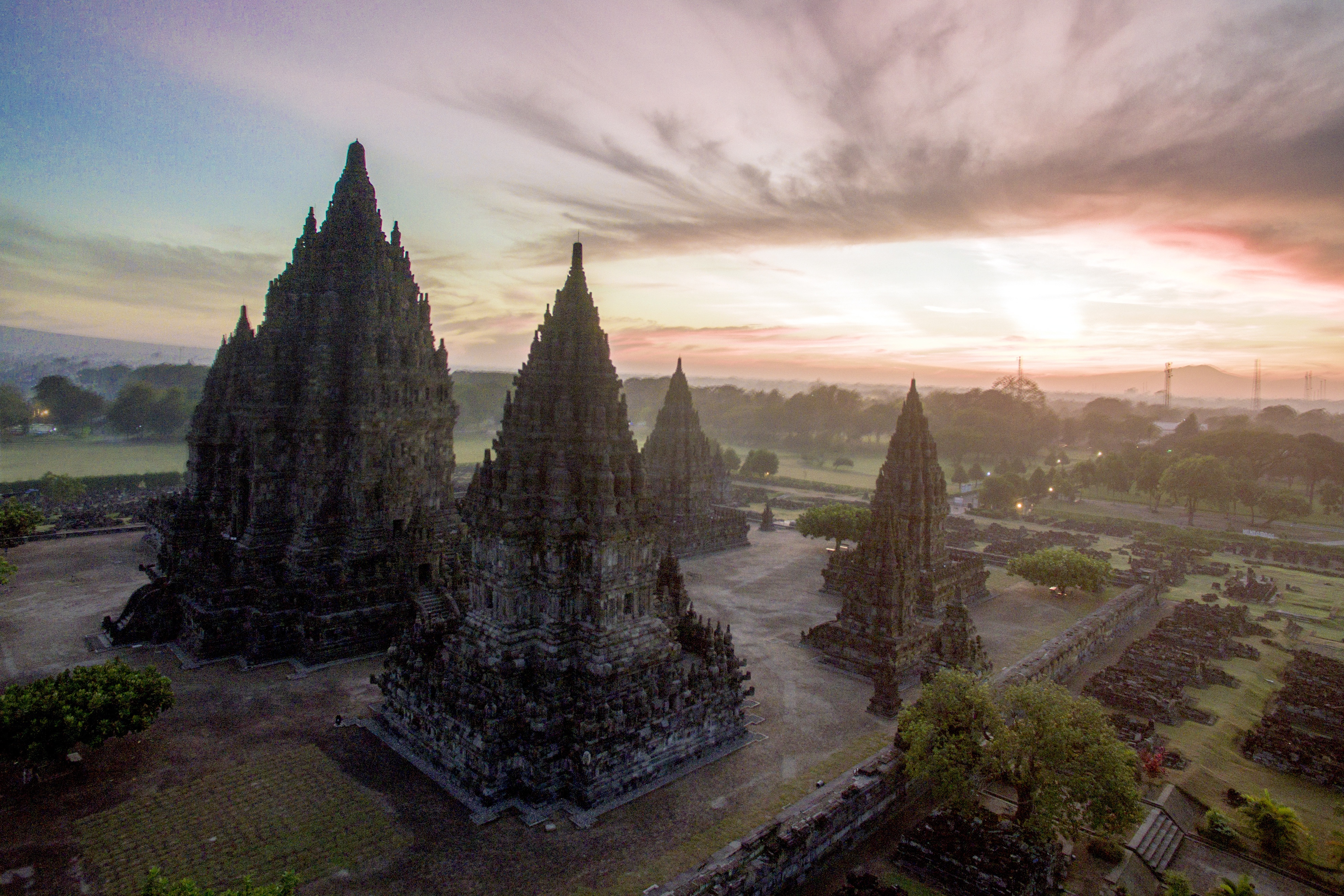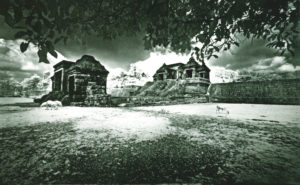Look Deeper at Prambanan Temple Building

All temples contained in Prambanan temple consist of three parts. These parts, among others, consists of the base of the temple, the body of the temple, and the roof of the temple. This division of building structures is in harmony with the traditions that exist in the ancient Hindu-Buddhist world.
In Shiva Temple, the base is equipped with a nice decorated ledge. This kind of shape reminds anyone who sees it going like to the Borobudur Temple. Each of the four steps leading up to the gates of the monument that has a large Kala head.
This Kala is a monster like a lion very loyalty to God Shiva. In Java, Kala became the most popular protective figure and can be seen in every door and niche.
At Shiva Temple, its east gate is surrounded by two large niches containing the statues of Shiva’s gatekeepers, the good Nandhishvara and the ruthless Mahakala. The body of the temple is divided into two by a corridor, a pattern that shows the architecture of East Java. Above and below the corridor, the wall is interspersed with a series of niches with kala and reliefs that bear the roof of the temple above. This architectural figurine, which is quite common in India, is also used as a Buddhist temple niche decoration near this area, Kalasan Temple.
The upper part of Shiva Temple consists of a series of smaller levels that repeat the temple’s body shape with a smaller scale. The roof is also decorated by a dome with moon-shaped parts on it and decorated with fake doors, pillars, and motifs of kala. Each dome is a miniature of the temple that holds the basic principle of Hindu-Buddhist thought, the balance between the macro cosmos, which is represented by its temple, and the micro cosmos, represented by its dome.
In Java, Hindu temples usually have box-shaped ornaments on it, while Buddhist temples are usually crowned with stupas. Striped ball ornaments in Prambanan Temple may have prompted the confusion of the first western visitor, so they often regard the Prambanan Temple complex as a Buddhist monument.
Thus, parts of the temples that exist in Prambanan not only a mere architectural process. Moreover, the parts that are divided into three contain symbolic meanings that make Prambanan Temple as evidence of cultural life that existed in the past.


